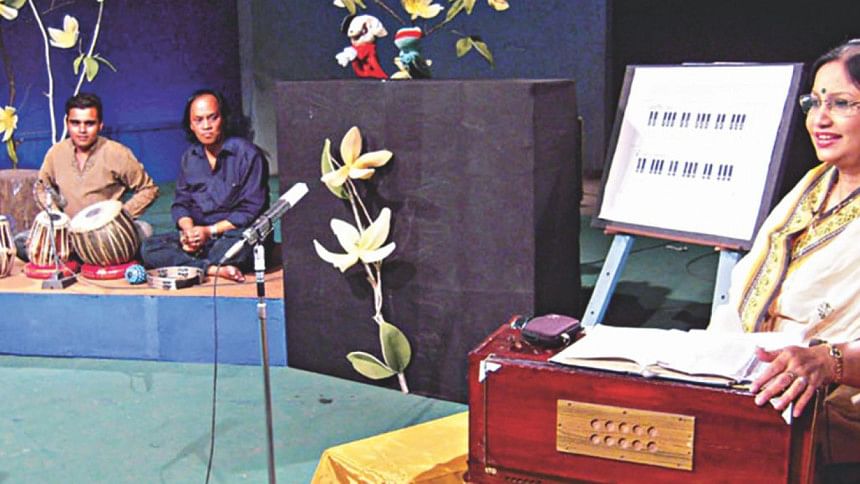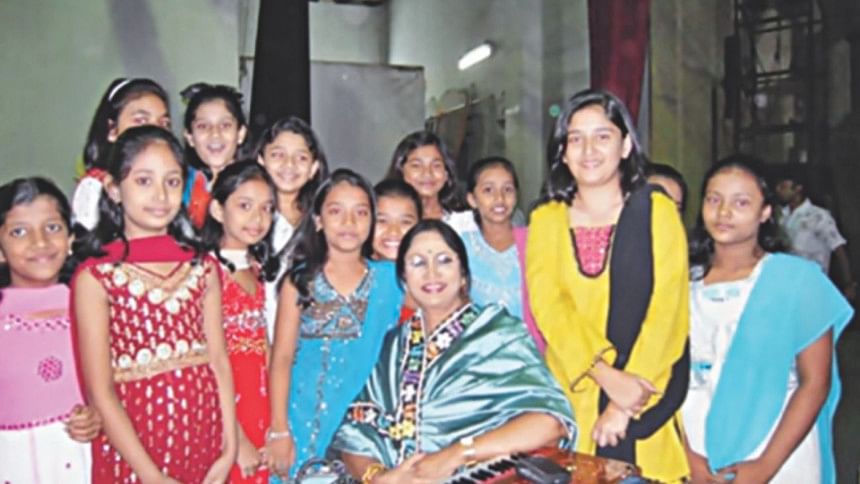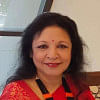Golden jubilee plus - Esho Gan Shikhi

It was the year 1964 and Ferdausi Rahman was very excited to be the first artist for the PTV station to be inaugurated in Dhaka, Bangladesh (erstwhile East Pakistan), when artist Mustafa Monwar proposed for her to start a children's musical program, teaching songs to the tiny tots. At first, she was a bit hesitant, as her own busy routine with live performances, playbacks and foreign travel had already claimed 100 percent of her time. However, she agreed and thus started the children's program Esho Gan Shikhi. Child artists Shimul Billah, Salma Sultana, Rita Shabnam, Rubana Huq and Kashfia Nahreen are some of the starters that I can remember. The two puppets Mithu and Monty created by Mustafa Manwar added the spice to the beef. The constant quibbles and attempt to reproduce the songs made the children roll in laughter and got them glued to the TV, especially around 5 PM. Actor Shekhor and Ferdausi's son Rubaiyat Rahman played the two puppets made by Mrs. Sylvia Murtaza, a British lady who resided in Dhaka with her Bangladeshi husband. It was a wonderful team, and the lyricists Jebunnesa Jamal, Abdul Latif, Rafikuzzaman (to name a few) constantly churned new songs for the children. The songs Timi macher nam to jano, Tomra bolo shondhey hote, Ko e kola kho ye khai, Nobi elen uthlo geye, Grishmo borsha sarat hemanta sheet basanta and others flooded the homes of not only Bangladeshi residents but also of those from West Bengal.
Later on, I had opportunities of travelling to West Bengal with my aunt Ferdausi Rahman and met many of those children, who had first taken their tutelage from Esho Gan Shikhi'. Even Pandit Ajoy Chokroborty mentioned in Dhaka that he listened to Ferdausi Rahman's radio program (for teaching songs) and learnt the Nazrul song Ashey boshonto phulo bone. In programmes people would just come up to her and say, "We have been initiated into music by your children's program, we know all the songs." Then, at a quiet moment, I would ask her, "Moyna, what led you to agree to teach?" The reply is very interesting. In 1961 Ferdausi had gone to visit China where she spent a month visiting various provinces of China and singing her songs. She found out that in every commune they had common songs. In gatherings, the children would be initiated by the conductor and all would join in to sing the songs together. She hoped that one day the Bangladeshi population would have some common songs, which all would know and sing together in common get-togethers.

With this in mind, she toiled day and night, teaching the children at home, in her Abbasuddin Shongeet Academy at BTV Centre, to produce these weekly programs. Sometimes, she had to record 4/5 programs in one go because of her travel plans. Sometimes, she would be ill, and she took a wheelchair to the BTV premises and recorded her program there. The show continued and fifty plus years had passed. Then one day, I had an opportunity to travel with her to a program in USA. One group of children sang these songs, whilst others joined in, they were older. Then I met these young adults who came with their children, they said they had learned as children, maybe 40 years back and then their children had watched the same show and learned from there. I told her to look at these songs have become like the commune songs of China. What you had wished and written in your book Gan Geye Elam Chine (published by Generation PPA, 2001) has actually materialized. When someone starts Jadur pencil aha jadur pencil, there is not a single Bangladeshi who has not heard of this song. They join in, they have a commonality; they have a song. Sorry, not a song, many songs; and that is the adhesive that keeps together this nation of Bangladeshis, which has been purposely divided by so many. Divisiveness is easy, but being cohesive takes plenty of years and lots of dedication.
Nashid Kamal is an Academic, Nazrul exponent and translator

 For all latest news, follow The Daily Star's Google News channel.
For all latest news, follow The Daily Star's Google News channel. 



Comments